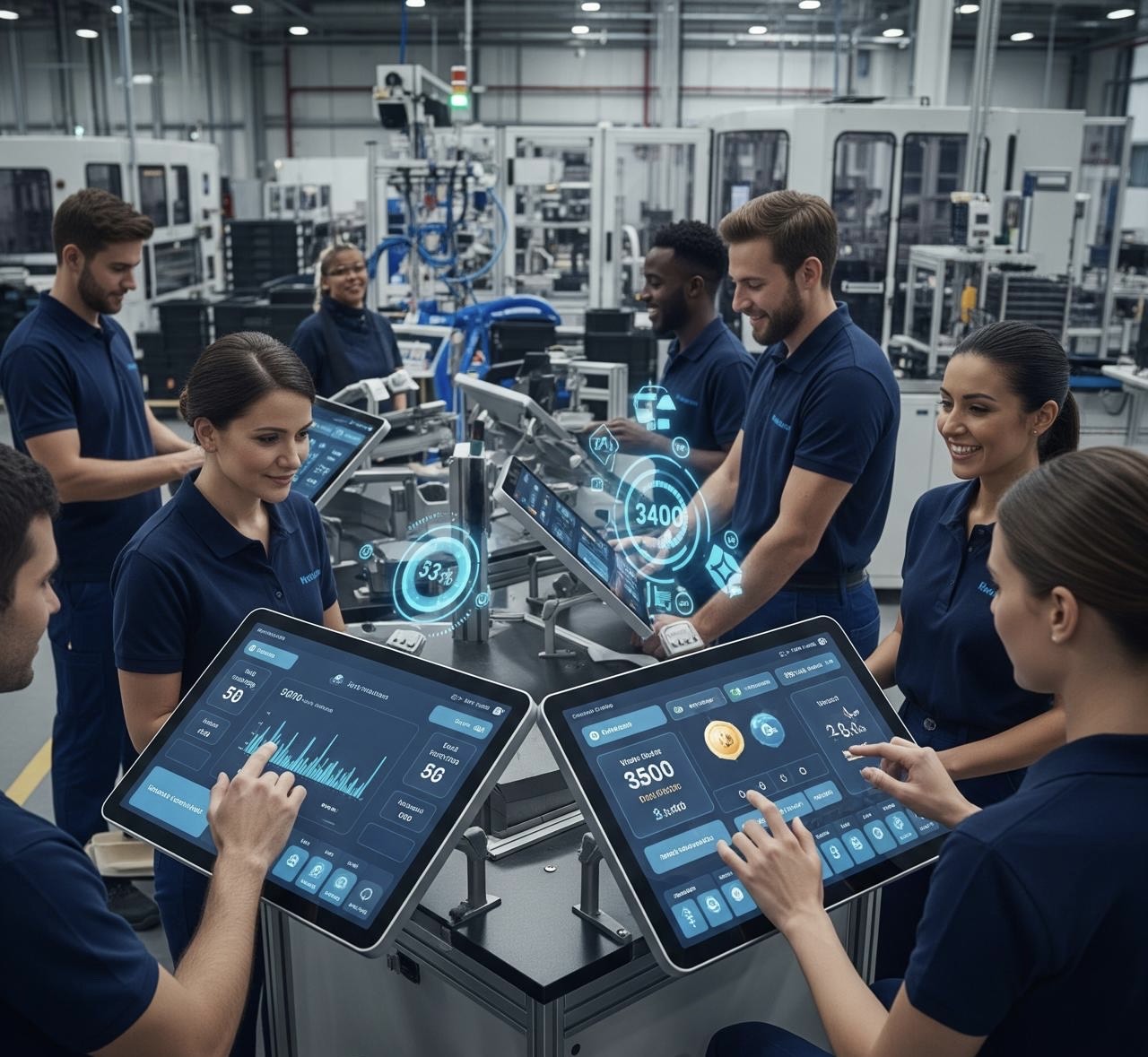
Gamification in Manufacturing
Turning Production Goals into Achievements
By: Destiny Dickerson
In an industry known for precision, consistency, and productivity, manufacturing may not be the first place one associates with game design. However, as the workforce evolves and technology becomes more embedded in every layer of production, the concept of gamification has found a surprising and compelling home in factory environments. More than a trend, gamification is emerging as a serious tool for driving engagement, improving performance, and transforming the culture of manufacturing from top to bottom.
Understanding Gamification in the Industrial Context
Gamification refers to the application of game-design elements in non-game environments. These elements include scoring systems, progress tracking, challenges, rewards, and competition. When used in manufacturing, gamification integrates these components into day-to-day tasks to encourage behaviors that support operational excellence.
Unlike traditional productivity strategies that often rely on supervision and linear incentives, gamification introduces an element of intrinsic motivation. Workers are no longer just completing tasks—they are meeting challenges, advancing their skills, and gaining recognition for performance that might otherwise go unnoticed.
How Gamification Enhances Productivity and Morale
At its core, manufacturing is about consistency. But consistency can lead to monotony, which in turn can cause disengagement. Gamification reinvigorates the workday by turning routine objectives into meaningful milestones.
For example, workers can be given digital dashboards that display real-time performance statistics, such as the number of completed units, quality control accuracy, or safety compliance. When workers see how they’re performing in real-time and how close they are to earning recognition or rewards, they often feel more invested in their work. This sense of ownership over performance leads to increased focus, faster production times, and improved quality outcomes.
Additionally, team-based challenges encourage collaboration and accountability. Employees are not only working toward their success but also contributing to the group’s achievements. This kind of structured competition, when framed positively, helps build a more unified and goal-driven workforce.
Improving Training Through Game-Based Learning
Manufacturing facilities are often fast-paced environments where new employees are expected to get up to speed quickly. Gamified training modules are proving to be more effective than traditional methods. Instead of watching videos or reading manuals, employees interact with simulations and scenario-based tasks that mimic real-world challenges.
This active form of learning improves retention, reduces onboarding time, and allows supervisors to track progress through digital learning platforms. Workers can revisit specific modules, retry failed scenarios, and earn certifications in a way that feels rewarding rather than obligatory.
Moreover, gamification provides an effective solution to the multi-generational workforce found in many factories today. While younger workers may find digital platforms intuitive and engaging, older employees benefit from step-by-step training that is practical, repetitive, and non-technical.
Aligning Gamification with Business Goals
The success of gamification in manufacturing depends on aligning game elements with the broader business objectives. If not implemented with intention, gamification can become superficial or even counterproductive.
To ensure it supports long-term goals, performance metrics used in games must reflect what truly matters to the company. These can include safety compliance, customer satisfaction scores, reduction in scrap material, or continuous improvement suggestions. In many successful implementations, companies link game rewards to real incentives, such as gift cards, time off, recognition in company newsletters, or professional development opportunities.
Furthermore, digital platforms used for gamification should integrate with existing systems, such as ERP software or manufacturing execution systems, to allow seamless tracking and reporting.
Addressing the Challenges of Gamification
Despite its advantages, gamification is not without risks. If poorly designed, it can lead to stress, unhealthy competition, or manipulation of metrics just to win rewards. There is also the potential for gamification to be seen as infantilizing, especially if game design is not age-appropriate or relevant to the workplace culture.
Transparency is crucial in mitigating these risks. Workers must clearly understand how the game works, what data is being tracked, and how rewards are earned. Equally important is regular feedback from participants, allowing the system to be improved and adapted over time.
Inclusivity also plays a critical role. A gamification strategy must accommodate a range of roles, skill levels, and learning styles. What motivates one team may not motivate another. The most successful programs involve employees in the design process to ensure the system reflects their needs and values.
Looking Ahead: The Evolution of Gamification in Manufacturing
The future of gamification in manufacturing is closely tied to technological advancement. As artificial intelligence, wearable devices, augmented reality, and IoT systems become more common on the factory floor, the potential for gamified experiences grows.
We can expect more innovative dashboards, customized learning paths, and AI-driven performance feedback to shape how workers interact with machines and with one another. In this context, gamification becomes not just a tool for motivation but a framework for organizing, monitoring, and experiencing work.
In an era where the manufacturing industry is under pressure to adapt rapidly to labor shortages, supply chain disruptions, and increased automation, gamification presents a human-centered solution. It encourages people to take pride in their work, aim higher, and grow alongside the machines they operate.
Conclusion
Gamification in manufacturing is far more than a buzzword. It is a forward-thinking strategy that can transform how workers engage with their jobs, how companies train their teams, and how operations achieve excellence. When applied thoughtfully, gamification turns production goals into personal and team-based achievements, cultivating a culture of motivation, accountability, and continuous improvement.
Sources
- Burke, B. (2014). Gamify: How Gamification Motivates People to Do Extraordinary Things. Bibliomotion.
- PWC. (2020). Gamification in the Workplace. Retrieved from https://www.pwc.com
- Manufacturing.net. (2021). Gamification on the Plant Floor: Beyond the Buzz. Retrieved from https://www.manufacturing.net
- Deloitte. (2019). The Evolution of Gamification in Learning and Development. Retrieved from https://www2.deloitte.com
- Forbes. (2022). Gamification In The Manufacturing Industry: More Than Just A Game. Retrieved from https://www.forbes.com